Like many urban areas, Pittsburgh had a vibrant nighttime music scene presenting fabulous music of all genres. But it was jazz music that flowed freely from one major venue, the Crawford Grill. In our second post this Black History Month, read on about this amazing place.
Gus Greenlee
The Hill District neighborhood, located immediately east of Pittsburgh’s central business district, was home to a mixture of European immigrants and African Americans in the early twentieth century. The vibrant cultural life supported clubs that attracted top jazz talent. The Crawford Grill opened at 1401 Wylie Avenue in 1933 by William “Gus” Greenlee.
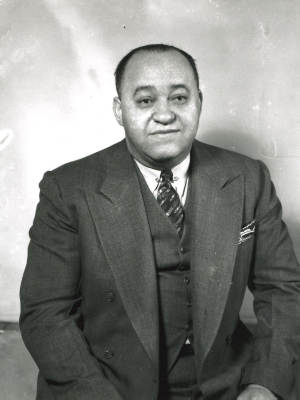
A photo of Gus Greenlee. Source: Society for American Baseball Research, https://sabr.org/bioproj/person/fabd8400.
Greenlee, one of the most influential African American business owners in Pittsburgh at the time, owned a number of these clubs. Greenlee was also owner of the Pittsburgh Crawford’s baseball team, a Negro League affiliate, whose players included Satchel Paige, Cool Papa Bell and Josh Gibson.
Greenlee with his business partner, Joe Robinson, opened second location of the venue at 2141 Wylie Avenue at the intersection with Elmore Street in 1945 (although some sources mention an opening date of 1943) to capitalize on the expanding night life in that part of the neighborhood. The locations complemented each other attracting legends such as Art Blakey, Charles Mingus, Max Roach, Miles Davis, John Coltrane, Bill Evans, and Kenny Burrell and became a nationally recognized jazz venue. The restaurants featured both local and touring entertainers and band which increased their appeal.
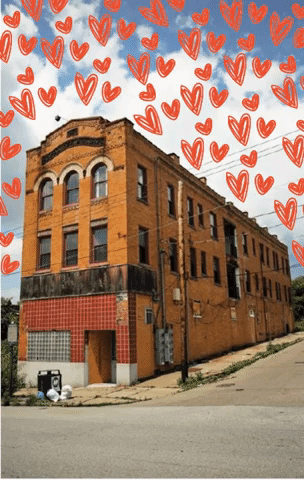
Digitally heart bombing the Crawford Grill No. 2 for Valentine’s Day.
Crawford Grill No. 2
In 1950, Gus Greenlee sold the Crawford Grill No. 2 to his business partner, Joe Robinson and his son, Bill Robinson. Unfortunately, the first location was soon after lost to a fire in 1951. Under their leadership, The Grill No. 2 was extensively renovated in the summer of 1953, culminating in a week of festivities. Advertising in the Pittsburgh Courier on August 29, 1953 touted that “Everything Is New… New, Comfortable Plastic Booths in Chartreuse and Pumpkin Red … New Modernistic Murals on the Walls … New Chinaware, All Trending to Give a Cozy Atmosphere.”
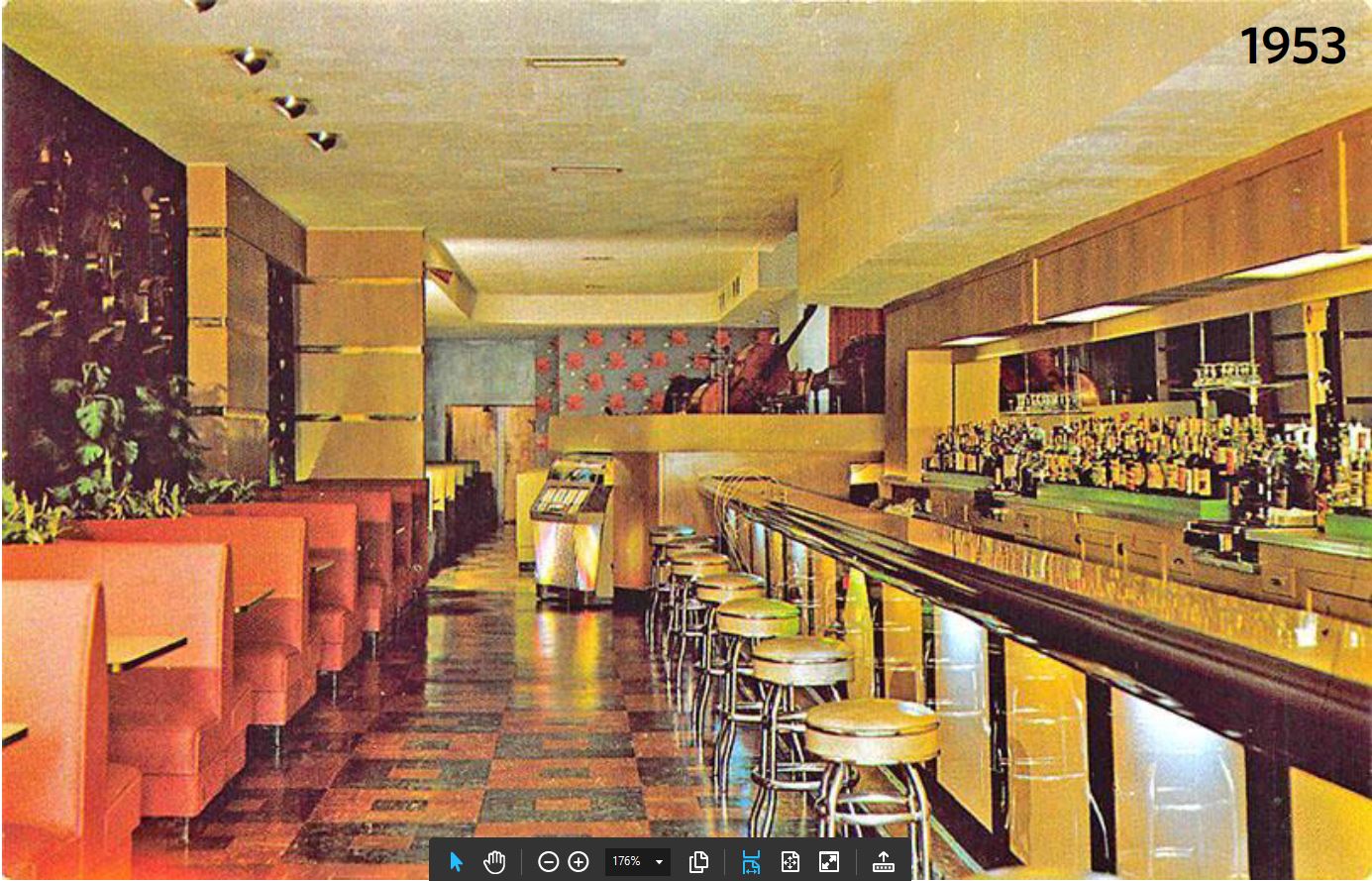
Historic Postcard of Crawford Grill No. 2
The renovated Grill was an immediate success. The Robinsons emphasized good food during the day, starting with breakfast, and fine dining and top-quality music late into the night. The renovation featured a prominent elevated stage between the bar and table seating that allowed the musicians to perform facing any direction to the audience and projected the sound quality throughout the space.
Under the Robinsons, The Grill drew a socially and racially diverse audience. Patrons included blue-collar workers and members of Pittsburgh’s professional and business elites such as Roberto Clemente, Willie Stargell, the Rooneys (owners of the Pittsburgh Steelers), the Kaufmanns, and the young playwright August Wilson (who frequented The Grill and referenced it in his play, Fences). Out of town visitors such as Ethel Kennedy and Martin Luther King are known to have visited.
During its heyday in the 1950s and 60s, the Crawford Grill No. 2’s patrons listened to jazz greats such as Charles Mingus, Clifford Brown, Nat King Cole, Maynard Ferguson, Thelonious Monk and Max Roach. Pittsburgh’s own talented musicians, George Benson, Stanley Turrentine, and Walt Harper, got their start here too.
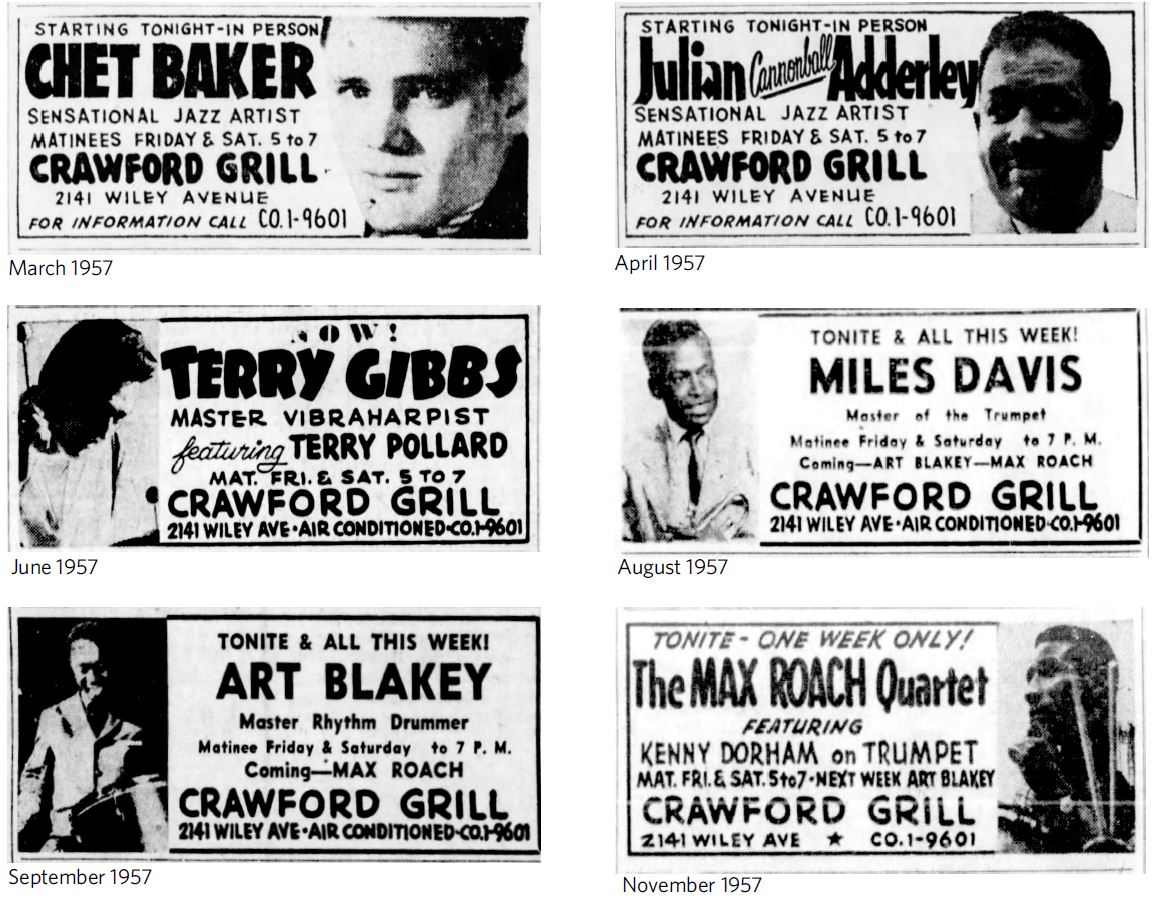
Advertisements from the Pittsburgh Post-Gazette, Historic Structure Report, Pfaffmann+Associates, 2018.
The Crawford Grill No. 2 remained opened until 2003 but its business dropped off during the 1970s and never regained its success of the mid-twentieth century. Despite its eventual decline, its success is remembered and appreciated for its vital role in the social and cultural history of the Hill District, in the nurturing of local musical talent and in shaping what has come to be known as “the Pittsburgh Sound.”
Preserving Crawford Grill No. 2
Our office recognized the significance of the Crawford Grill No. 2 with a Pennsylvania State Historical Marker in 2001. The Crawford Grill/ Sochatoff Building was also determined eligible for listing in the National Register of Historic Places in 2012 (PHMC Key # 005501) under Criterion A for its association with African American History and Entertainment in Pittsburgh.
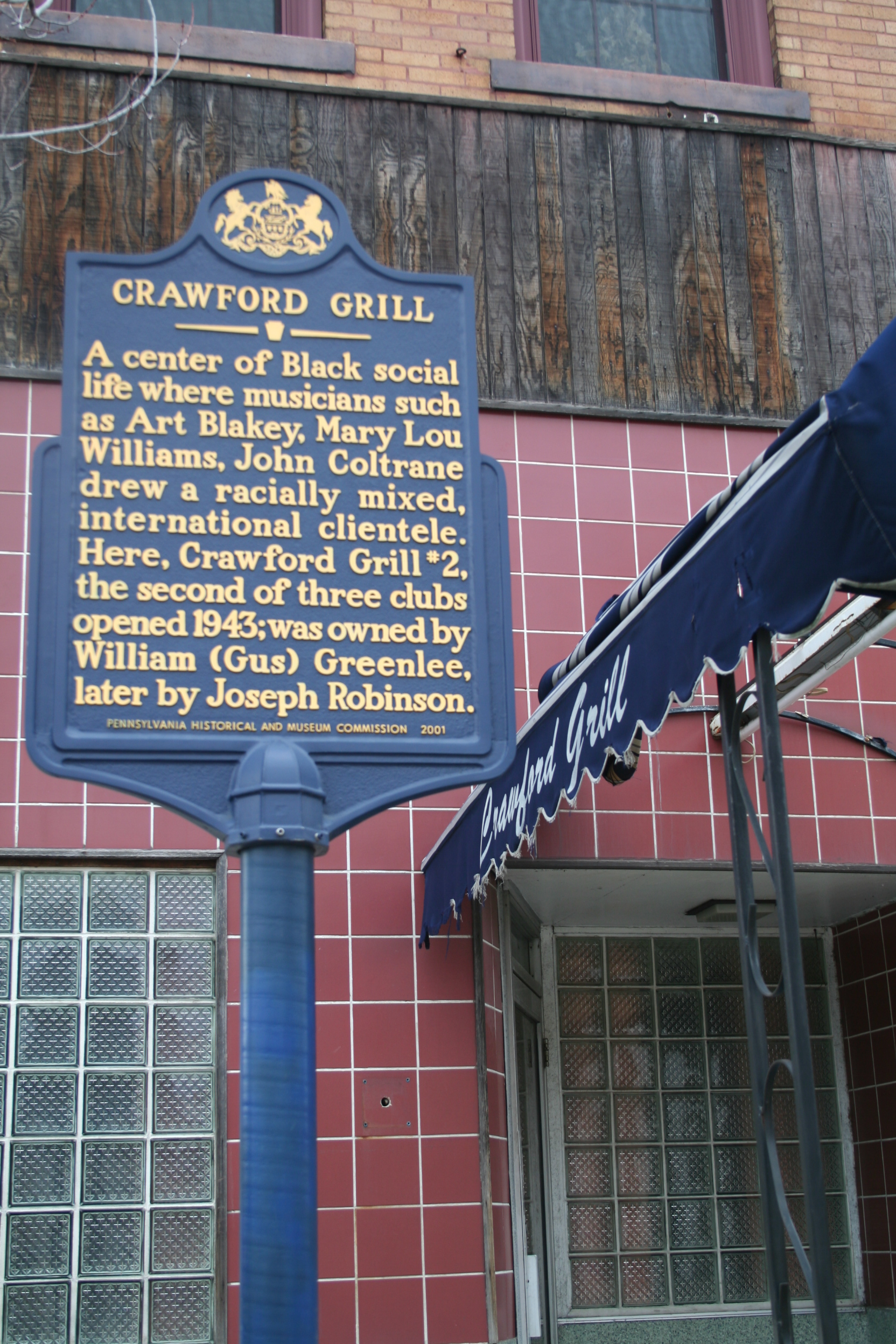
Historical Marker for the Crawford Grill.
This type of recognition has spurred continue interest in remembering and appreciating the building’s storied history. Although it is currently vacant, a new chapter to celebrate its music-based legacy is underway.
Pittsburgh Gateways Corporation and its partners, Urban Innovation 21 and Hill House Economic Development Corporation are investigating ideas to reuse the building that include creation of a music venue, interpretive center, cultural center, business incubator, affordable artist housing, youth mentor program, and education space for studios, workshops and collaboration in a range of performing arts.
No matter what the proposed use or companion development completed to make the project viable, the first floor will be restored to its 1953-1968 period of significance appearance that reflects The Grill’s heyday and to ensure compliance with the Secretary of the Interior’s Standards for Rehabilitation.
Keystone Grant for the Crawford Grill No. 2
The project team turned to the Keystone Historic Preservation Grant program for financial assistance to prepare a Master Development Plan for the Crawford Grill No. 2. This resultant historic structure report and master plan looked at the general history of the building since its construction in 1917 by Joseph Sochatoff as a multi-purpose building with a tavern on the first floors and apartments above to its prominence as a center of jazz music.
The report included assessment of the conditions of the building, identifying those character defining features that will be important to retain in any redevelopment scheme but essential to maintain the feeling and integrity of the building. The most important space of the property is the public area of the jazz club on the first floor, with its elevated stage as its focal point.
Research for the report even discovered a rare color postcard of the interior of the Crawford Grill No. 2 (see above), looking north from the entrance, shortly after renovations were completed in 1953. The postcard coupled with photographs of the patrons and staff of the grand opening document those features including the wood and metal wall mural of marching musicians, dining room plan and acoustic ceiling and bulkhead of the stage area that remain in varied condition as well as those missing features such as the curved lip and single-tier design of the original stage.
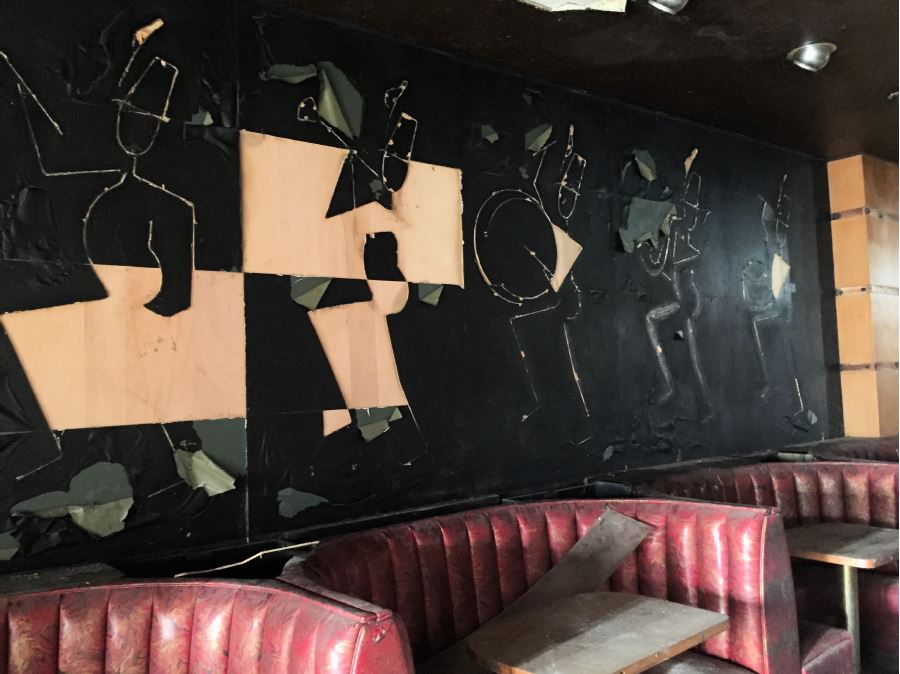
Wall Mural in the Dining Room, Pfaffmann+Associates, 2018.
The Master Plan focused on viable design options and realist cost estimates that look at not only the Crawford Grill but how other development on the block may support the programming and reuse of the historic resource.
With this renewed commitment to Pittsburgh’s Hill District and the Crawford Grill, the great legacy of Pittsburgh to the jazz community will be remembered. The Keystone Grant program support of the project will ensure that this important historic resource can be appropriately rehabilitated in such a way to celebrate the significance of this African-American related resource.
Keystone Historic Preservation Grants
If you are a nonprofit or entity of local government and think that the Keystone Historic Preservation Grant program may assist the preservation of your historic building, remember that the deadline for applications for the 2018-2019 fiscal year Keystone Grants are due on March 1, 2019. Find the grant guidelines here on the PHMC website: https://www.phmc.pa.gov/Preservation/Grants-Funding/Pages/Planning-Projects.aspx for pre-development or planning projects like the Master Plan for the Crawford Grill or https://www.phmc.pa.gov/Preservation/Grants-Funding/Pages/Construction-Projects.aspx for capital projects.
And don’t forget to show the love for a significant historic building in your community this Valentine’s Day. Organize your own heart bomb to celebrate a historic building that needs your love! Feel free to share the love with the PASHPO office! Share your heart bomb pics in the comments or on social media using the #PreseservAtionhappenshere hashtag.
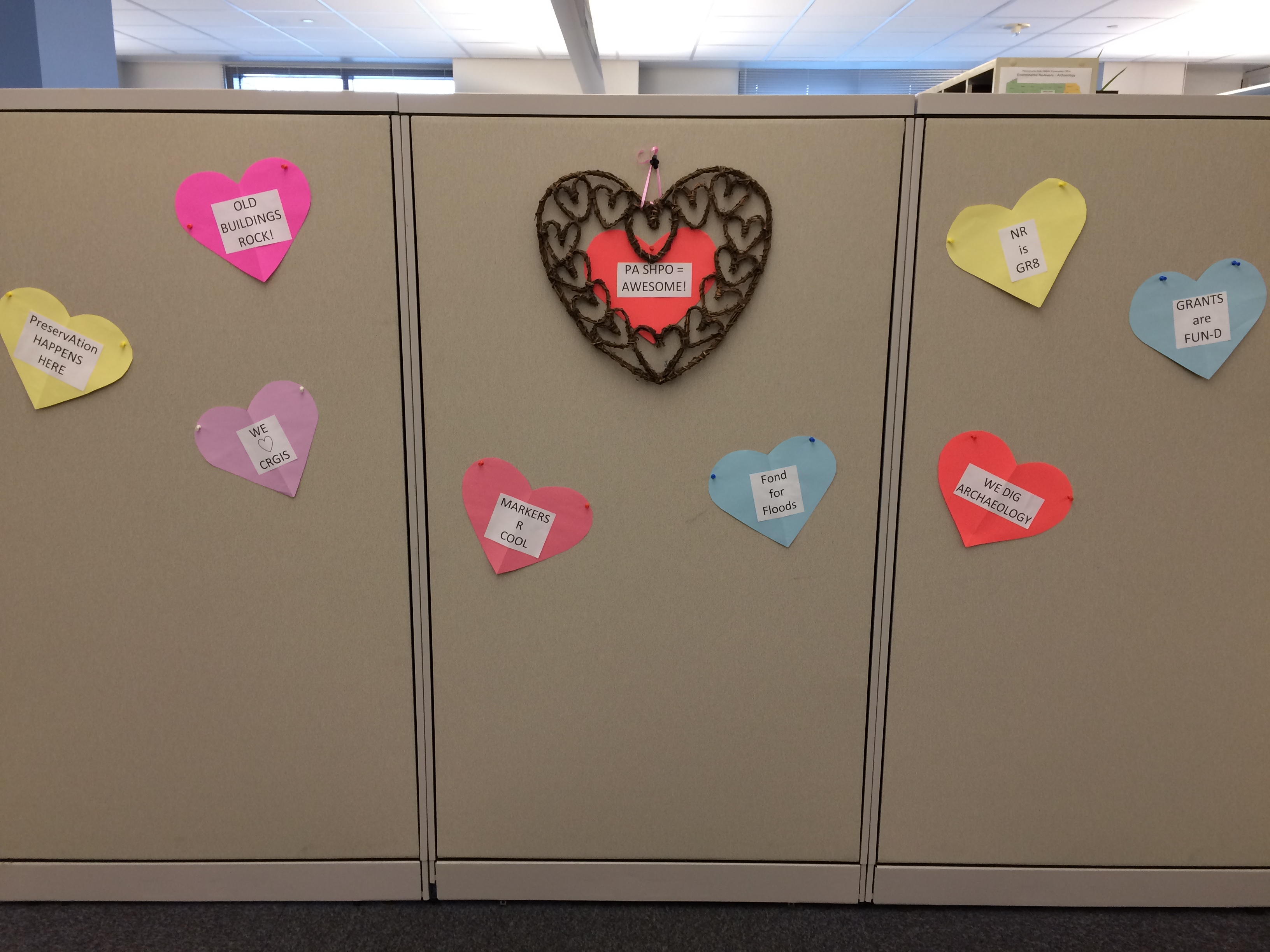
Comment Policy
PHMC welcomes and encourages topic-related comments on this blog. PHMC reserves the right to remove comments that in PHMC’s discretion do not follow participation guidelines.
Commenters and Comments shall be related to the blog post topic and respectful of others who use this site.
Commenters and Comments shall not: use language that is offensive, inflammatory or provocative (this includes, but is not limited to, using profanity, obscene, or vulgar comments); disparage other commenters or people; condone illegal activity; identify the location of known or suspected archeological sites; post personal information in comments such as addresses, phone numbers, e-mail addresses or other contact details, which may relate to you or other individuals; impersonate or falsely claim to represent a person or an organization; make any commercial endorsement or promotion of any product, service or publication.
If you would like to comment on other topics not related to this blog post but related to PHMC, please fill out the PHMC Contact Us Form.
The Crawford Grill was always in inspiring to me…. My fondest memories of living in Pittsburgh. ……Life changing in so many ways……to hear the worlds best jazz musicians right there in the Grill….WOW!!!!
Fred – I spent many a Saturday night at the Grill while a student at Duquesne University in the late 1950’s along with one of my fraternity brothers. Enjoyed seeing most of the groups listed in the article, plus others like Ramsey Lewis and of course Walt Harper and Harold Betters. I remember having to budget our drinks carefully as a beer cost 75 cents at the time. When we wanted something a bit more rocking, we would go down the street to the Hurricane to see Birdie Dunlap (proprietress), or on the Northside to the Liberty Lounge or the Hi Hat club. Good times for sure!
Ray Holihan – January 2020.
Typo on spelling my name in heading. Correct spelling is Holihan
Long overdue, but well worth the wait. Congratulations to the PHMC.
My mother worked as a waitress there in the late 50’s. I’ve written a semi-fictional book entitled “A Warm Heart of Steele.” The book centers around how my parents met back at the Crawford.
Saw George Benson there when he was 16 years old. Hendrix had nothing on him, even at that age
William Price “Buzzy” Robinson Sr. passed away Monday February 1, 2021 at 90 years of age.
Joseph and Buzzy Robinson would be saddened and appalled at the destructive vandalism of the 8′ x 20′ “Marching Band” mural designed by Andy Warhol.
I loved the food and enjoyed the music. Spend plenty of nights there picking up my father (Elmer Blake) who also helped run the club along with other things doing it’s hey days.😊